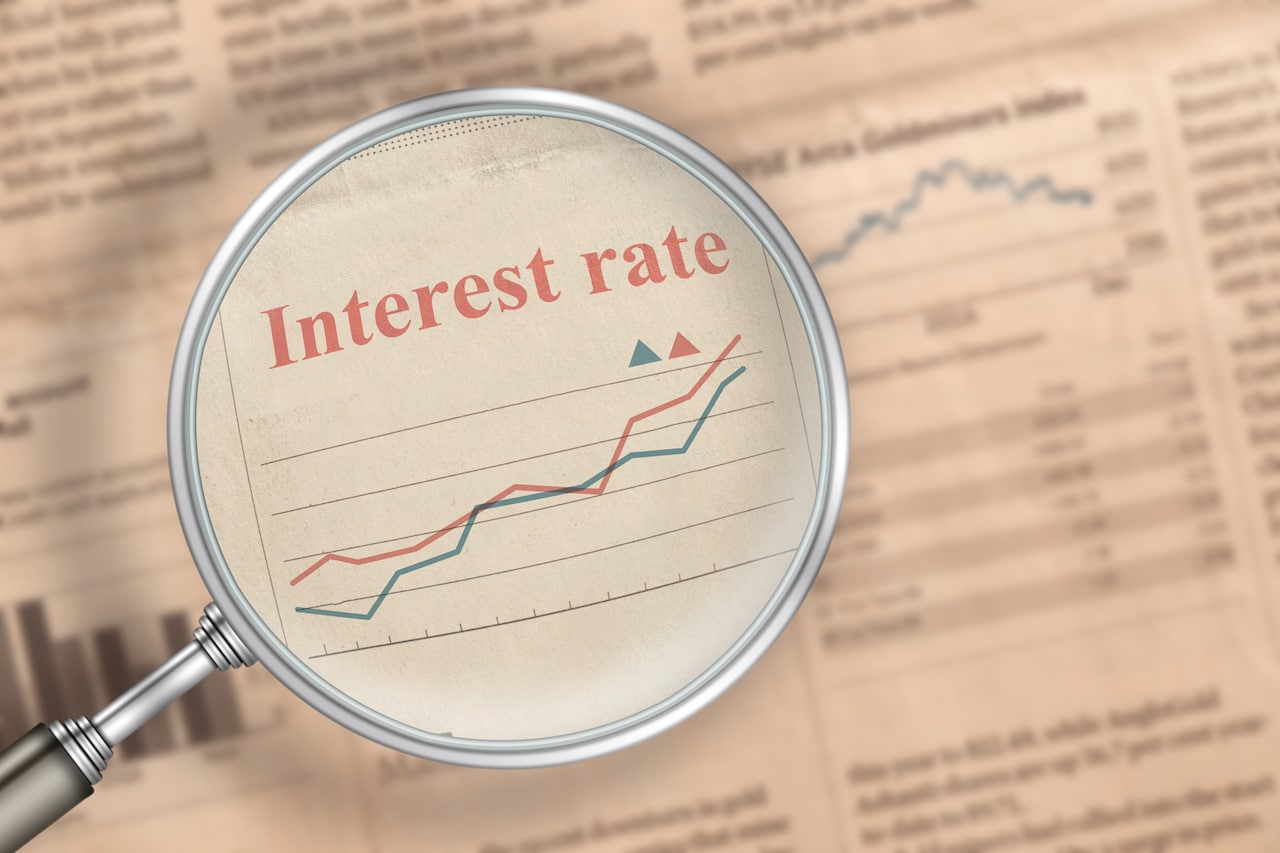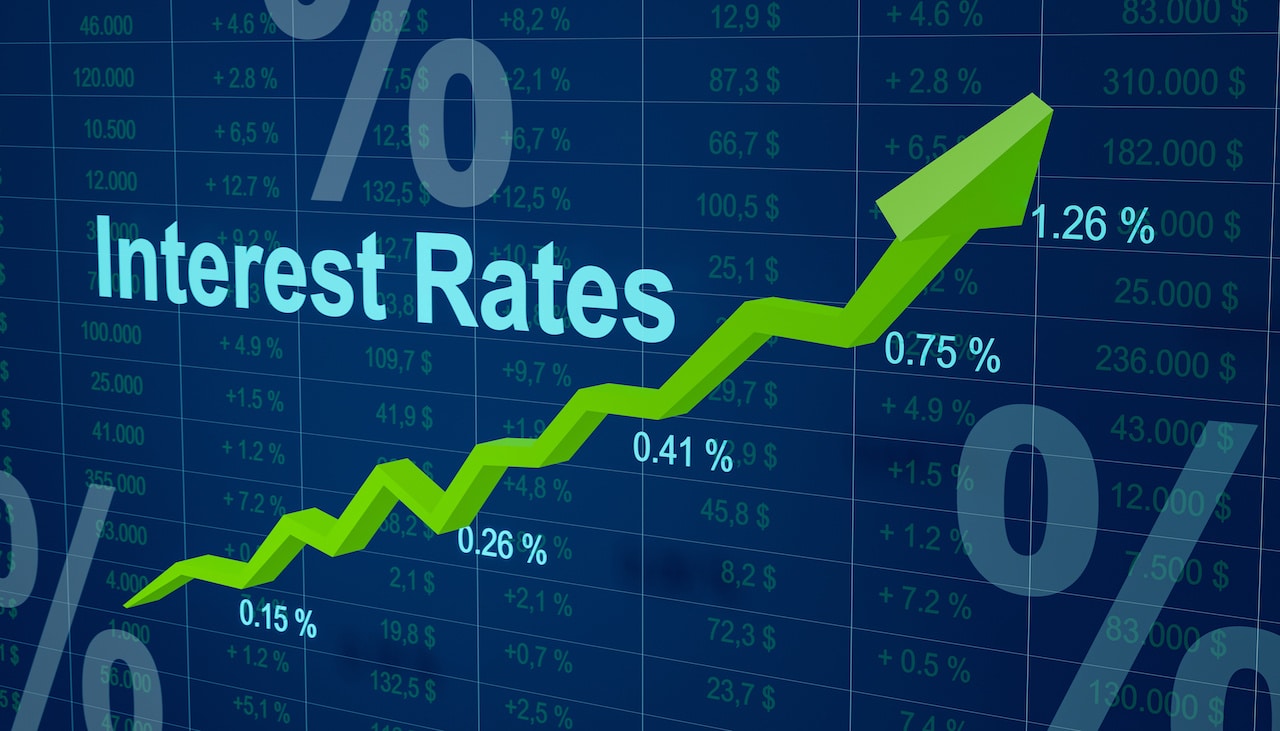Credit Sesame discusses another interest rate rise announced by the Fed.
On September 21, the Federal Open Market Committee (FOMC) announced the fifth Fed funds rate increase of 2022. The FOMC within the Federal Reserve makes decisions on interest rates.
With yet another rate increase on the books, it’s natural for consumers to wonder what’s next – and when the rate hikes will stop.
As much as interest rates have risen this year, it’s possible they could rise even further.
What are the Fed rate increases so far?
2022 has seen the fastest rise in the Fed funds rate since the 1980s. That makes sense because this year has also seen the highest inflation rates since the 1980s.
To put this in perspective, the Fed funds rate was near zero when the year began. The Fed funds rate has been unusually low since the Great Recession of 2008. So in a sense, the Fed is simply catching up.
The FOMC has raised rates in each of its last five meetings. After starting with a mild increase of 0.25% in March, the FOMC picked up the pace to 0.50% in May, and then to 0.75% in each of the last three meetings.
That makes for a total rate increase of 3.0% in just over six months. Even so, there are reasons to believe the Fed is nowhere near finished raising rates.
Why is the Fed doing this?
We need to look at inflation to understand why the Fed is doing this and why it may continue to raise rates.
The Fed’s two main monetary policy goals are to:
- Encourage full employment
- Limit the rate of inflation
This is tricky, because these are conflicting goals.
One way to promote full employment is to make borrowing cheap with low interest rates. This encourages economic activity, which in turn results in more jobs.
To limit the rate of inflation, on the other hand, the monetary policy solution is to raise interest rates. That makes borrowing more expensive, which dampens economic demand. Generally speaking, lower demand cools the rate of price increases.
In 2022, it’s clear that inflation is the greater of the two concerns. At 3.7%, the unemployment rate is very low by historical standards. In fact, there are roughly two job openings for every unemployed person. That means not only is the job market in good shape but a labour shortage contributes to inflation.
Unlike unemployment, inflation has been a significant problem this year. 2022 has seen the highest inflation rate in over 40 years.
When the inflation rate started to rise in 2021, the Fed initially viewed it as a temporary condition resulting from the economy’s reopening after widespread pandemic shutdowns in 2020. This year it’s become clear that this bout of inflation has staying power. That’s why the FOMC started raising rates aggressively.
Is the job done yet?
Even though there were very mild increases in the Consumer Price Index (CPI) for July and August, inflation is not under control. A closer look revealed that the overall inflation number for those months looked low only because of a decrease in energy prices.
Energy is a volatile sector, and prices may bounce up and down from month to month. Of greater concern is that inflation across other sectors continued to run high.
With unemployment low and inflation for most things continuing to be unacceptably high, the FOMC announced the significant interest rate rise in September. They also gave a clear indication that they expected to do more of the same before the year’s out.
What does the Fed expect to happen?
Besides making rate decisions, the FOMC releases a set of economic projections four times a year. Those projections show the committee’s expectations for basic economic indicators at the end of the current year, and over the next few years.
The FOMC updated those economic projections in its September meeting. One of the economic indicators they include is the Fed funds rate, so the projections give a reasonably reliable roadmap of where the FOMC expects to go next.
Currently, the rate is just over 3%. The latest projections show that the FOMC expects the Fed funds rate to be 4.4% by the end of this year. This may change, but the end of the year is fast approaching and the FOMC set the Fed funds rate. It seems reasonable to expect an interest rate rise of more than a full percentage point over the Fed’s two remaining meetings this year.
Beyond that, the FOMC’s projections show that they expect the Fed funds rate to peak at 4.6% next year before starting to reduce. However, there is a very big assumption behind that – that inflation cools considerably next year.
Is another interest rate rise likely?
The FOMC projects that inflation reduces in 2023 and returns to the Fed’s target of 2.0% by 2025. What if that does not happen?
With all the rate increases this year, it’s natural to assume that the Fed funds rate is getting pretty high. In fact, it is well below normal. But if inflation does not decrease, the Fed funds rate go much higher.
Over the past 50 years, the Fed funds rate has averaged 4.9%. At just over 3.0% now, today’s Fed funds rate has to rise by even more than the FOMC projections indicate to get to “normal.”
What’s more, the current inflation rate isn’t normal, either. The CPI has risen at an average annual rate of 4.0% over the past 50 years. For the year ending August 31, it had risen by 8.3%.
Typically, the Fed funds rate has been 0.9% above the rate of inflation. Currently, it is a few percentage points below the inflation rate.
This suggests that the inflation rate has to come down a lot over the next year or the Fed funds rate is likely to keep rising. History suggests that in a high-inflation environment the Fed funds rate could be more that double what it is now.
The Fed sets the rate policy, but it’s inflation that’s driving the bus. For the best idea of where the Fed funds rate is going, keep a close eye on inflation.
If you are interested in The Fed Announces Another Interest Rate Rise – When Will It Stop? you may also be interested in:
- Consumers with Poor Credit Face Extra Dose of Inflation
- Should You Delay Major Expenses Because of High Inflation?
- Stock Market Reacts to the Pain of Higher Interest Rates
Disclaimer: The article and information provided here is for informational purposes only and is not intended as a substitute for professional advice.




















